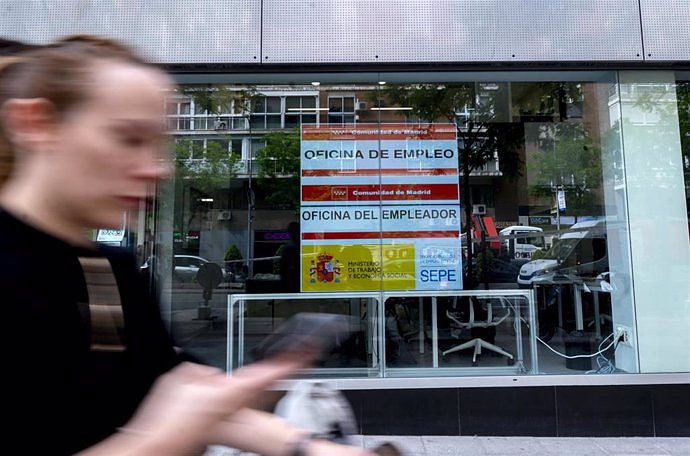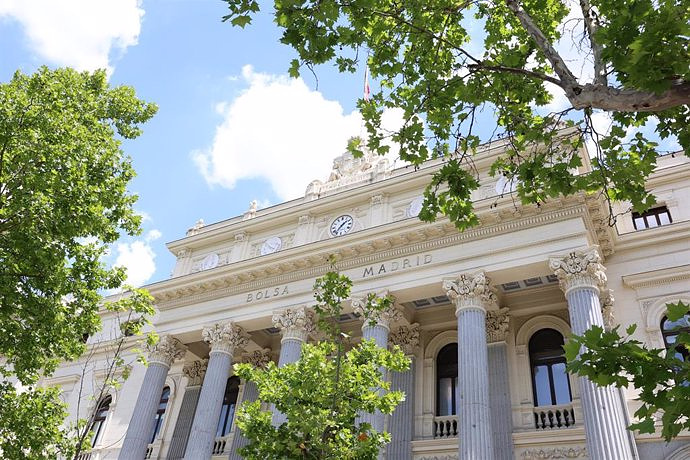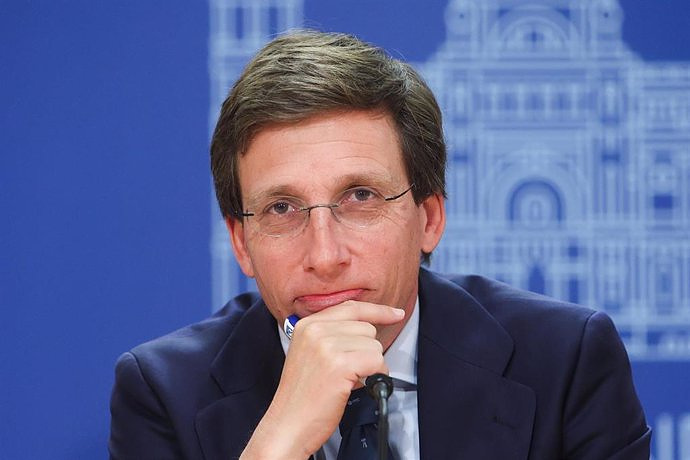Sunday's editorial in dagens nyheter, starting with the claim that Sweden has a proud history of responding quickly in the event of a crisis. The question is asked, why it needs to be a few weeks before the Swedish authorities to react to the reports about the seriousness of the virus spreading, and of a heavily burdened public health systems.
It is absolutely correct that the american crisis has historically been characterized by a remarkable slowness. The management of the south asian tsunami in 2004, is perhaps one of the most egregious examples.
the forest fire in Västmanland, sweden in 2014, revealed to the evaluation of the operational search and rescue and crisis management operations, there were defects that a greater or lesser extent, involved all stakeholders, and skill levels. It was, among other things, on the pure ignorance of the reality of fighting the big fires, and what the actors could bring to the table. It was all about the inability to create and communicate a collective awareness, and on the inability to determine when you need to move on to other practices than the normal ones. There was also a question about the inability to make reasonable and appropriate decisions regarding the direction, design, prioritization, management, and collaboration. Finally, it was the fact that almost all of the players have initially acted too slowly and too cautiously.
in the Summer of 2018, the hit in Sweden once again, by widespread forest fires, and these fires were the subject of a public inquiry. Sweden asked in a very early stage of the EUROPEAN union for help, because their own skills are not sufficient. The efforts during the fires was thought to have been dealt with quite well. At the same time, each of the identified weaknesses of many, and, in principle, the same as in 2014. The commission came to the conclusion that Sweden is not well enough equipped for us to be able to feel safe about the future of the large and complex forest fires.
without the presence of the virus, which puts Sweden as well as in many other countries in the sample. According to the minister for social protection, ms Lena Hallengren, who, in a variety of contexts to refer to the regions ' responsibility, the readiness to deal with the virus timely. Also, the Swedish national Board of health, refers to the regions the responsibility to plan their own activities, on the basis that there are ”rules, and the clarity of what you are going to cope in the health care in transition”. From the Health side, however, they did not say how many people would need to be cared for by an extensive and severe infection, or what should be the priorities that would need to be done. In our neighbouring countries, Denmark and Norway, is in its planning (which is based on the annual pandemiplaner from a worst-case scenario of a 25 per cent and 10-15 per cent of the sick population. According to the Norwegian calculation model, Sweden is in need of 4,000 intensivvårdsplatser. Folkhälsomyndigheten believe, however, that this is an unreasonable number to work with. They could not muster the number of places available. At the same time, is preparing for several regions of the materielbrist.
in my opinion, are some of the responses on the selection of the reacting senfärdigt in the event of a crisis, to be found in the few details I mentioned.
in our krisberedskapssystem is based on a few basic principles. They are, in brief, that in a crisis, in so far as it is possible, on the basis that it is the responsibility of a business, under normal circumstances, even during a crisis (the person), and at the lowest possible level in the community (principle of subsidiarity) and also in regular work situations (principle of equality). It is against this background that Lena Hallengrens, and the Swedish national Board of health, the references to the regions of responsibility are to be seen.
But the principles are not as clear-cut as they might seem. How, for example, the expression ”in so far as it is possible” and ”lowest possible level” to be understood? And when the principles do not hold? Of the crisis in times of peace, and there is no answer. However, it is clear that the person is subject to all of the actors in everyday life are preparing themselves so that their operations can continue even during a time of crisis. It is also assumed that the operators are preparing themselves through work, and when it becomes a real-life situation, the available resources can be used efficiently and for the operators of the different measures support one another in an effective manner. They are different players, it is expected, therefore, in a time of crisis, forming a whole with the ability to handle any given situation.
on the part of all stakeholders to have the capacity to handle all the possible situations is large. There seems to be little or no understanding of a crisis situation, the important points are different from the mainstream, often in streamlined, business. The anomalies are frequent and necessary, but in many cases they are neither prepared or trained. It is not unusual that the operators have developed emergency response plans that are then not used to support, in a time of crisis. Therefore, it is not surprising, then, that one of the recurring weaknesses in the Swedish crisis management is that many of the players initially taking a cautious approach. And when you act you do it is often too easy. The danger is not only to address the immediate needs of the delays, but also to signal to the outside world is delayed, the operator does not have the capacity to deal with their share of the crisis on their own. Rather than form a whole, appear to be players who are more or less isolated islands, which solves problems by means of ad-hoc interventions, or not at all.
Rather than form a whole, appear to be players who are more or less isolated islands, which solves problems by means of ad-hoc interventions, or not at all,
but The Swedish model is based on the independently organised public authorities. Also, the government is not a government agency. In time of peace no authority to take the command of any other authority. When it comes to the local and regional crisis management, the so-called extraordinäre events, such as the un, allows for the legislation of certain ansvarsförskjutning in each level. One option is to lift the responsibility from a regional to a national level, that is to say, the level of the government, does not exist. Thus, it is not possible to lift the management of the crisis at this level, even if it would be necessary for a rational approach to the prioritisation of the various actions or the co-ordination of the efforts of the other reasons, it would suffer as a result of a crisis to be dealt with by as the principle of liability of the responsible operators.
it would have to 4.000 intensivvårdplatser is considered to be an impossible need to meet. In the event of a couple one hundred virussmittade people preparing for some of the players in materielbrist. These data indicate that the responsible actors of the preparation do not have to analyse the either the possibility of a worst-case scenario, or the ability, either alone or in combination with other agents, to manage such a scenario. We don't know yet if we are going to be faced with such a challenge. We must, however, be understood that the present risks of a widespread and severe contamination and future threats and risks, which lead to the events of the fast, or the svåröverblickbara course of events, will give rise to large, complex initiatives that require extreme responsiveness as regards the adequacy of the cross-cutting decisions.
Who is going to lead or take charge in those situations? At the present time, the answer is: no! The krishanteringsråd found in the cabinet office, provides a forum for the exchange of information and discussion between the government and the authorities, nothing more and nothing less.
All experience has shown that we need a body, or as a function of the level of the government, with the responsibility and the authority to be in an emergency situation, to temporarily manage and co-ordinate the operational response. In times of crisis needs of the people with a clearly defined leadership – and not a talking shop.
Link to a graphic

 Exploring Cardano: Inner Workings and Advantages of this Cryptocurrency
Exploring Cardano: Inner Workings and Advantages of this Cryptocurrency Seville.- Economy.- Innova.- STSA inaugurates its new painting and sealing hangar in San Pablo, for 18 million
Seville.- Economy.- Innova.- STSA inaugurates its new painting and sealing hangar in San Pablo, for 18 million Innova.- More than 300 volunteers join the Andalucía Compromiso Digital network in one month to facilitate access to ICT
Innova.- More than 300 volunteers join the Andalucía Compromiso Digital network in one month to facilitate access to ICT Innova.-AMP.- Ayesa acquires 51% of Sadiel, which will create new technological engineering products and expand markets
Innova.-AMP.- Ayesa acquires 51% of Sadiel, which will create new technological engineering products and expand markets CaixaBank executes almost 75% of its share repurchase in six weeks of the program
CaixaBank executes almost 75% of its share repurchase in six weeks of the program The Ibex 35 rises 1% in the mid-session and regains 11,000 points, after digesting the GDP data in the US
The Ibex 35 rises 1% in the mid-session and regains 11,000 points, after digesting the GDP data in the US Adolfo Domínguez multiplies his annual profit by more than four and increases his sales to 126.7 million
Adolfo Domínguez multiplies his annual profit by more than four and increases his sales to 126.7 million The SEPI exceeds 6% in the capital of Telefónica and the State investment is already close to 1,400 million
The SEPI exceeds 6% in the capital of Telefónica and the State investment is already close to 1,400 million How Blockchain in being used to shape the future
How Blockchain in being used to shape the future Not just BTC and ETH: Here Are Some More Interesting Coins Worth Focusing on
Not just BTC and ETH: Here Are Some More Interesting Coins Worth Focusing on Retrópolis brings the golden age of video games and computing to the UPV
Retrópolis brings the golden age of video games and computing to the UPV Looking for video games that value the neighborhoods of Valencia
Looking for video games that value the neighborhoods of Valencia UPV researchers improve the efficiency of air conditioning systems using a geothermal heat pump
UPV researchers improve the efficiency of air conditioning systems using a geothermal heat pump València is committed to citiverse and smart tourism to be "the reference technological hub of the Mediterranean"
València is committed to citiverse and smart tourism to be "the reference technological hub of the Mediterranean" A million people demonstrate in France against Macron's pension reform
A million people demonstrate in France against Macron's pension reform Russia launches several missiles against "critical infrastructure" in the city of Zaporizhia
Russia launches several missiles against "critical infrastructure" in the city of Zaporizhia A "procession" remembers the dead of the Calabria shipwreck as bodies continue to wash up on the shore
A "procession" remembers the dead of the Calabria shipwreck as bodies continue to wash up on the shore Prison sentences handed down for three prominent Hong Kong pro-democracy activists
Prison sentences handed down for three prominent Hong Kong pro-democracy activists ETH continues to leave trading platforms, Ethereum balance on exchanges lowest in 3 years
ETH continues to leave trading platforms, Ethereum balance on exchanges lowest in 3 years Investors invest $450 million in Consensys, Ethereum incubator now valued at $7 billion
Investors invest $450 million in Consensys, Ethereum incubator now valued at $7 billion Alchemy Integrates Ethereum L2 Product Starknet to Enhance Web3 Scalability at a Price 100x Lower Than L1 Fees
Alchemy Integrates Ethereum L2 Product Starknet to Enhance Web3 Scalability at a Price 100x Lower Than L1 Fees Mining Report: Bitcoin's Electricity Consumption Declines by 25% in Q1 2022
Mining Report: Bitcoin's Electricity Consumption Declines by 25% in Q1 2022 Oil-to-Bitcoin Mining Firm Crusoe Energy Systems Raised $505 Million
Oil-to-Bitcoin Mining Firm Crusoe Energy Systems Raised $505 Million Microbt reveals the latest Bitcoin mining rigs -- Machines produce up to 126 TH/s with custom 5nm chip design
Microbt reveals the latest Bitcoin mining rigs -- Machines produce up to 126 TH/s with custom 5nm chip design Bitcoin's Mining Difficulty Hits a Lifetime High, With More Than 90% of BTC Supply Issued
Bitcoin's Mining Difficulty Hits a Lifetime High, With More Than 90% of BTC Supply Issued The Biggest Movers are Near, EOS, and RUNE during Friday's Selloff
The Biggest Movers are Near, EOS, and RUNE during Friday's Selloff Global Markets Spooked by a Hawkish Fed and Covid, Stocks and Crypto Gain After Musk Buys Twitter
Global Markets Spooked by a Hawkish Fed and Covid, Stocks and Crypto Gain After Musk Buys Twitter Bitso to offset carbon emissions from the Trading Platform's ERC20, ETH, and BTC Transactions
Bitso to offset carbon emissions from the Trading Platform's ERC20, ETH, and BTC Transactions Draftkings Announces 2022 College Hoops NFT Selection for March Madness
Draftkings Announces 2022 College Hoops NFT Selection for March Madness























